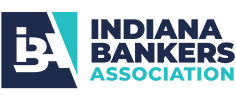As we all well know, S.2155 provided some anticipated regulatory relief covering many areas. One of the relief items was HMDA relief, which TCA covered in a previous special release. As a quick refresher, the Act provides that an institution does not need to report data with respect to closed‐end mortgage loans if it originated fewer than 500 closed‐end loans in each of the two preceding calendar years, and the same for open‐end loans in the same timeframe. Also, the Act does not allow the exemptions for institutions if they received a rating of “needs to improve” during each of its two most recent CRA examinations or a rating of “substantial noncompliance” on its most recent CRA examination.
On Friday, August 31, 2018, the CFPB released updated regulations (yet to be published), an executive summary of those updates, an updated 2018 Filing Instructions Guide (FIG), and an updated Reference Chart.
One concern was that the S.2155 rulemaking was effective in May, so would we have a partial year where all data needed to be filed? The CFPB realized that as well. and the exemptions are for the entire 2018 calendar year filing,
The 2018 HMDA rule update:
- Clarifies which data points in Regulation C are covered by the partial exemption.
- Clarifies that only loans and lines of credit that are otherwise reportable under Regulation C count toward the thresholds for the partial exemption.
- Clarifies the exception to the partial exemption for negative CRA examination history.
- Designates a non‐universal loan identifier for certain partially exempt transactions.
- Clarifies that insured depository institutions and insured credit unions that qualify for a partial exemption may optionally report exempt data points so long as they report all data fields that the data point comprises.
- Institutions with a less than a Satisfactory CRA rating may not be able to avail themselves of the HMDA exemptions. If your institution needs assistance meeting the CRA mandates, you can contact TCA for help.
Institutions can create their own non‐ULI which must be unique to the institution, or they can still use the ULI creation scheme from the CFPB.
Institutions that opt to voluntarily report an exempt data point must report all data fields that the specific data point comprises.
The chart below shows “what’s out” and “what’s in.” What’s out items or fields will not be omitted from the LAR but will require inserting an “exempt” code or the word “exempt” in the field. All that is specified in the FIG.
| Optional Reporting under the Exemptions (“What’s Out”) | Unchanged Items (“What’s In”) |
| Universal Loan Identifier (ULI)(1003.4(a)(1)(i)) Property Address (1003.4(a)(9)(i)) Rate Spread (1003.4(a)(12)) Credit Score (1003.4(a)(15)) Reasons for Denial (1003.4(a)(16)) Total Loan Costs or Total Points and Fees (1003.4(a)(17)) Origination Charges (1003.4(a)(18)) Discount Points (1003.4(a)(19)) Lender Credits (1003.4(a)(20)) Interest Rate (1003.4(a)(21)) Prepayment Penalty Term (1003.4(a)(22)) Debt‐to‐Income Ratio (1003.4(a)(23)) Combined Loan‐to‐Value Ratio (1003.4(a)(24)) Loan Term (1003.4(a)(25)) Introductory Rate Period (1003.4(a)(26)) Non‐Amortizing Features (1003.4(a)(27)) Property Value (1003.4(a)(28)) Manufactured Home Secured Property Type (1003.4(a)(29)) Manufactured Home Land Property Interest (1003.4(a)(30)) Multifamily Affordable Units (1003.4(a)(32)) Application Channel (1003.4(a)(33)) Mortgage Loan Originator Identifier (1003.4(a)(34)) Automated Underwriting System (1003.4(a)(35)) Reverse Mortgage Flag (1003.4(a)(36)) Open‐End Line of Credit Flag (1003.4(a)(37)) Business or Commercial Purpose Flag (1003.4(a)(38)) | Application Date (1003.4(a)(1)(ii)) Loan Type (1003.4(a)(2)) Loan Purpose (1003.4(a)(3)) Preapproval (1003.4(a)(4)) Construction Method (1003.4(a)(5)) Occupancy Type (1003.4(a)(6)) Loan Amount (1003.4(a)(7)) Action Taken (1003.4(a)(8)(i)) Action Taken Date (1003.4(a)(8)(ii)) State (1003.4(a)(9)(ii)(A)) County (1003.4(a)(9)(ii)(B)) Census Tract (1003.4(a)(9)(ii)(C)) Ethnicity (1003.4(a)(10)(i)) Race (1003.4(a)(10)(i)) Sex (1003.4(a)(10)(i)) Age (1003.4(a)(10)(ii)) Income (1003.4(a)(10)(iii)) Type of Purchaser (1003.4(a)(11)) HOEPA Status (1003.4(a)(13)) Lien Status (1003.4(a)(14)) Number of Units (1003.4(a)(31)) Legal Entity Identifier (1003.5(a)(3)) |
So, of the 48 fields, 26 are “out” and 22 are “in.”
Here’s the bottom line:
- The exemption includes all HMDA data for the 2018 calendar year, even loans originated before the effective clarification date.
- Fields (including rate spread) have been eliminated and are listed in the summary above. (But it’s interesting to note the Bureau left open the door to put rate spread back in after future comment and rulemakings.
- If you choose to report one exempt field you must report them all, the only exception is that you can continue to use a ULI.
- If you don’t want to use the standard ULI, you can “create your own” non‐ULI which must be unique to your institution.
TCA will be providing a webinar on HMDA and these updates in the near future so stay tuned. Until then, contact us for your HMDA –or any compliance – needs anytime at (800) 934‐7347 or info@tcaregs.com.






